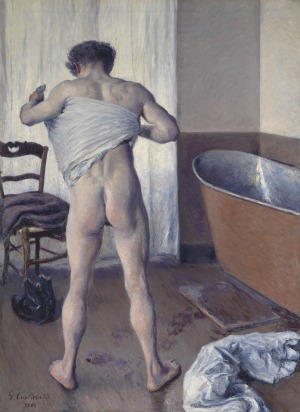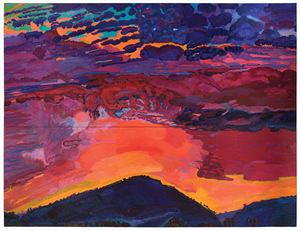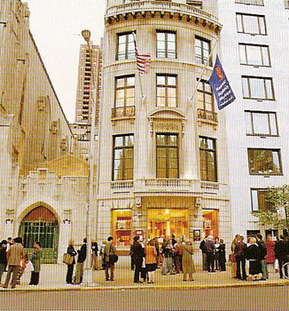 Let’s start with the premise that the works of Gustave Caillebotte are not as well known in the United States as they should be. They’re just not all that common in American museums.
Let’s start with the premise that the works of Gustave Caillebotte are not as well known in the United States as they should be. They’re just not all that common in American museums.
So I was pleased to read that the Museum of Fine Arts in Boston, at its annual meeting, announced that it was buying Caillebotte’s Man at his Bath, “regarded as one of the greatest works” of Caillebotte, MFA says in its press release.
It must be because, also according to the press release, the MFA has to sell eight works from its collection to pay for it (the amount was undisclosed). These works will be auctioned at Sotheby’s on Nov. 1 and 2:
• View from the Artist’s Window, Eragny, 1885, Camille Pissarro
• Overcast Day at Saint-Mammès, about 1880, Alfred Sisley
• Gust of Wind, 1899, Maxime Camille Louis Maufra
• Forest Interior (Sous-Bois), 1884, Paul Gauguin
• The Fort of Antibes, 1888, Claude Monet
• Bust Portrait of a Young Woman, about 1890, Pierre-Auguste Renoir
• Saint-Mammès: Morning (Le Matin), 1881, Alfred Sisley
• Pearl Mosque, Delhi, late 1880s, Vasily Vereshchagin
All gifted to the museum, but none on view since 2003, they’re valued at between $16.6 million and $24.3 million, all told, according to the Boston Globe. The Globe also said that the “Caillebotte painting is from a private foundation and has been on loan to the National Gallery in London since the later 1990s.”
What’s more, to purchase the painting, the MFA is using “funds by exchange and from the Charles H. Bayley Picture and Painting Fund, Edward Jackson Holmes Fund, Fanny P. Mason Fund in memory of Alice Thevin, Arthur Gordon Tompkins Fund, Gift of Mrs. Samuel Parkman Oliver–Eliza R. Oliver Fund, Sophie F. Friedman Fund, Robert M. Rosenberg Family Fund, and the Mary L. Cornille and John F. Cogan, Jr. Fund for the Art of Europe.”
This all follows the deaccessioning rules of the Association of Art Museum Directors, and it also is in line with what I’ve advocated several times (one example here) — “deaccessioning in public.” We know in advance what is being sold, when, where and, when the auction is over, we’ll know what the museum received for the deaccessioned paintings and where the money is going.
Man at His Bath has been in the MFA’s galleries since April, and will be back on view in the coming exhibition Degas and the Nude.
As George Shackelford, the curator (who’s leaving shortly), told the Globe, “There’s not a dud painting in this group [that’s being deaccessioned]. That’s why we are very sad to see them go. It’s not secondary material, it’s great stuff. It has to be to get the required sum.”
As queasy as one may feel about the deacessions here, these are curatorial decisions. We can backseat drive, or Monday-morning quarterback all we want, but at the end of the day, there are (as I’ve also written) boundaries. The public can’t be polled everytime a museum wants to upgrade its collection.




 him explaining his decision to use a lot of glass in the museum’s new American wing with the line, “so people outside can see people inside and know you don’t have to wear black tie to come in.” As he pointed out, most people see museum directors and patrons in those society pictures taken at fund-raising galas, when they are all dressed to the nines.
him explaining his decision to use a lot of glass in the museum’s new American wing with the line, “so people outside can see people inside and know you don’t have to wear black tie to come in.” As he pointed out, most people see museum directors and patrons in those society pictures taken at fund-raising galas, when they are all dressed to the nines. When I talk with directors, some say they are already visible in the community. One told me he was out virtually every night — often courting donors. That’s a tough, important job, but it’s not their only job, and they might even like the relief of being with regular people.
When I talk with directors, some say they are already visible in the community. One told me he was out virtually every night — often courting donors. That’s a tough, important job, but it’s not their only job, and they might even like the relief of being with regular people.